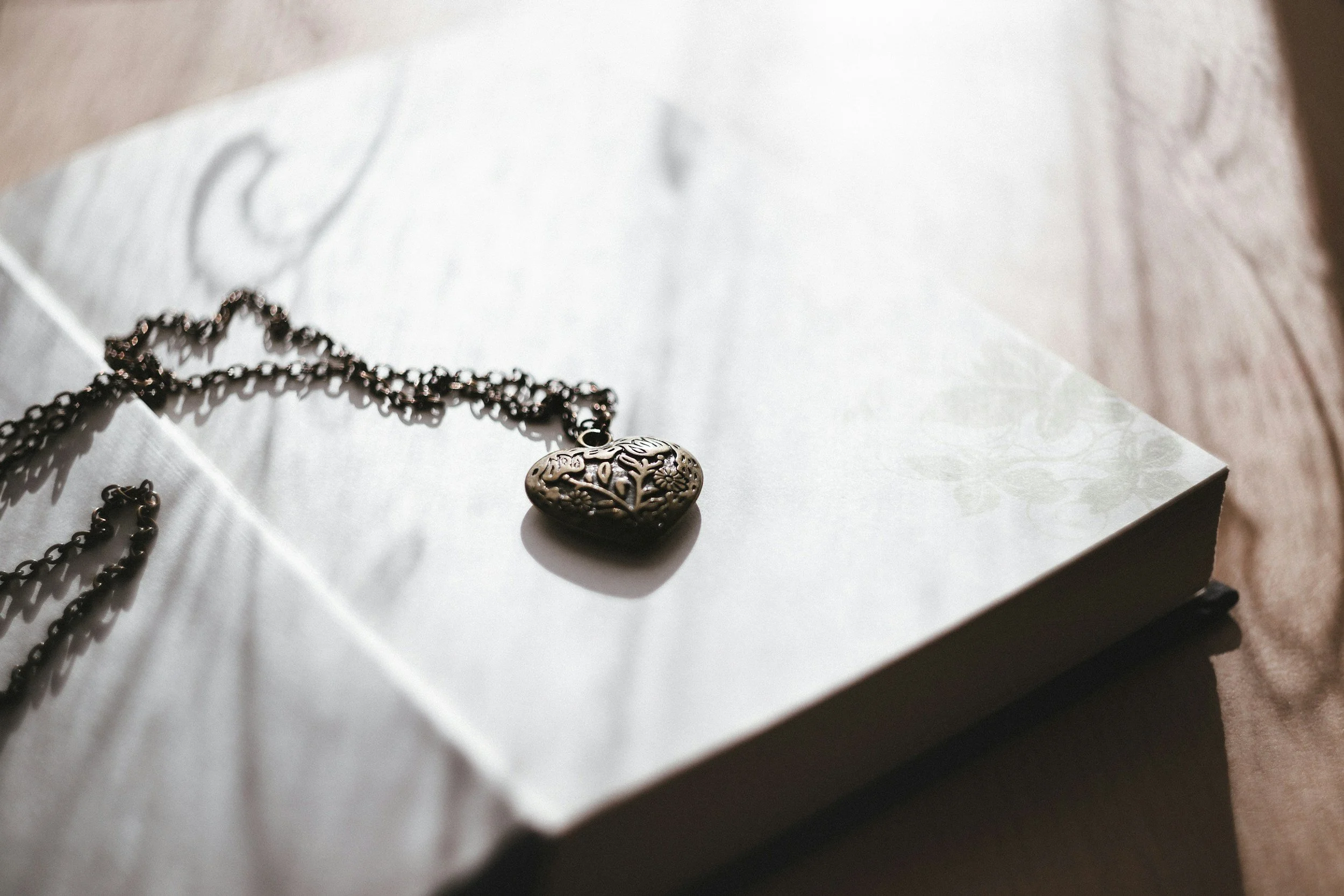Lockets and Love Notes: A Look at Love Tokens from the Past and What We Can Learn from Them
I’ve recently become fixed on buying an antique wedding ring. There is something solemnly romantic about wearing something that has lived many lives before you and holds the memories of past relationships within it. In my search, I’ve stumbled upon the strange and rich history of “love tokens” throughout the centuries. With Valentine’s Day approaching, I wanted to share a few of these interesting tokens and their stories. I think we have something to learn from our ancestors’ flair for the dramatic and (surprisingly) unabashed methods of expressing their feelings in the contexts of both love and friendship.
Posy Rings
Posy Rings were rings engraved with short messages for lovers or friends that became popular in the late Middle Ages. The name “posy ring” comes from poesie, the French word for “poetry”. They were used not only for proposals or friendly displays of affection, but to pass private messages to a lover. Wartski Jewelers, a jewelry company in London founded in 1865, included a list on their cite of the inscriptions on antique posy rings that have passed through their doors over their many years in business. These are a few of my favorites:
1. “The ring is round & hath no end so is my love for thy”.
2. “Yours to Command”.
3. “Some love in earnest, some in jest, I love her that I like best”.
4. “My gift is myself”.
5. “Let this present my good intent”.
6. “I long to have but blush to crave”.
7. “In thy breast my heart doth rest”.
8. “Let brotherly love continue”.
9. “Not the value, but my love”.
10. “Sith hands and hart with one Consent, let nought but death the Knot prevent”.
11. “A true friend’s gift”.
So, why do I love these? First of all, it’s fun to see that in the Middle Ages through the Victorian period our fellow humans were romantic, devoted to their friends, and even spicy! It is no small gesture to have a ring engraved, and it is made even more intimate by the fact that the message is known to the giver and receiver alone.
Lover’s Eyes
Lover’s Eyes were small portraits of, you guessed it, your lover’s eye. They had a period of popularity in the 1700-1800’s and were often worn as brooches or jewelry. These were a luxury, as the portraits would need to be commissioned and were often painted on ivory and set among jewels. Having a portrait of someone’s eye alone served two purposes, so to speak. First, it was a sign of deep intimacy. Lover’s Eyes aimed to capture the adoring gaze of one’s lover and all that was communicated by it. The intimacy was enhanced by the air of mystery around these pieces, as no one but the wearer would know who it belonged to just by looking at it. Which brings us to the second reason—to express love where it was forbidden. Lover’s Eyes were a token of affection that someone could give to his mistress without being identified. Romantic and mysterious? Absolutely. A tiny bit creepy? Also yes, but what I love most about them is the poignant level of closeness that they communicated.
Hair Jewelry
Last but certainly not least, we have hair jewelry. Hair jewelry found it’s height of popularity in the Victorian period, but the practice of keeping a lock of hair from a loved one has existed far before that. This was not exclusive to lovers. It was common, especially among women, to keep a lock of a female friend’s hair as a sign of devotion. In the Victorian period when mourning jewelry became popular, it was common to keep the hair of a family member who had passed in a locket, woven into a bracelet, or set in a ring. I have also come across many wedding rings that contain a lover’s hair, initials, and a personal inscription. I won’t lie, this one weirds me out a bit. But I include this practice because we can find within its melodrama a deep and unabashed display of affection. There are, in my opinion, few more intense examples of outward committed than this.
As I have started down the rabbit hole of antique love tokens, I have been both in awe and amused by the customs I have learned about. It is comforting to see that, even during periods that we often think of as austere, our fellow humans loved passionately in both romantic and platonic relationships. Artifacts from the past offer us contact with the past that descriptions alone cannot. I hope you have enjoyed reading the words written in rings hundreds of years ago as much as I have and have perhaps even been inspired to wear your heart on your sleeve a little more. I’m not sure that I’d recommend asking your friend for a lock of hair today, though I’d love to know their reaction if you do. But at the very least, tell them you love them more often. Write someone a love letter. Frame that photo that you’ve been meaning to. Be proud to love, and be loved, as we are meant to be.
Sources: https://wartski.com/posy-ring-messages/ ; The Mysterious Lover’s Eye Jewelry of 18th-Century England | Artsy

